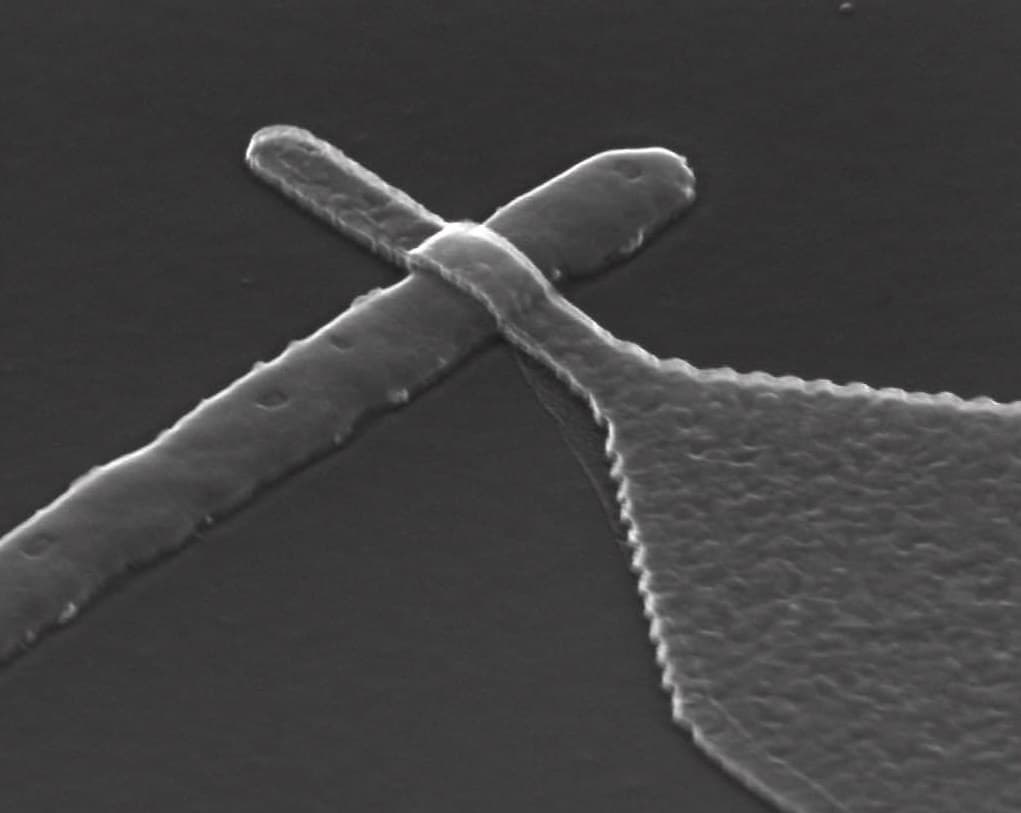The team of Milos Nesladek, head of the quantum photonics and technology research at imo-imomec, has a long track record of developing artificial diamonds and using their quantum properties in solid-state quantum systems. Their research, published in Nature Communications, demonstrated a viable approach for a quantum technology platform that operates at room temperature via electrically read electron-nuclear spin quantum gates on a diamond electronic chip. This proof of concept is a first step towards more complex, electrically-read quantum gates for advanced quantum technologies that can benefit from the long nuclear spin coherence in diamond.
Semiconductor spin qubit systems are promising candidates for future quantum technologies, such as quantum computing, telecommunication, and sensing, because of their potential for wide electronic scalability and nanoscale device integration. Nuclear spins in diamonds are particularly interesting because of their large coherence times, which is important for the performance and reliability of complex quantum applications. More precisely, at ambient temperatures, the coherence time is in the range of seconds; when cooled down to around 10K, it even increases to tens of minutes.
Further reading:
- This item is an addition to the main article: Imo-imomec: a hidden gem in materials R&D and related services
Want to know more?
- Most recent paper in Nature Communications: Room-temperature control and electrical readout of individual nitrogen-vacancy nuclear spins | Nature Communications
- 2019 Science paper: Photoelectrical imaging and coherent spin-state readout of single nitrogen-vacancy centers in diamond | Science (sciencemag.org)
- Background information in a 2019 imec article: The potential of artificial diamond: from drilling heads to quantum sensors| imec magazine May 2019 (imec-int.com)

Prof. Milos Nesladek, Ph.D., obtained his MSc. degree from the faculty of mathematics and physics at Charles University in Prague, and his Ph.D. degree from the Czech Academic Sciences, in collaboration with KU Leuven in the field of electronic transport in semiconductors. He is a professor of physics at the University of Hasselt and a member of staff at imo-imomec, an imec research group at the University of Hasselt. He is one of the pioneering scientists in the growth of CVD diamond crystals in all forms, being in that field for the last 30 years. Prof. Nesladek’s research topic deals with photoconduction in condense matter systems with an emphasis on wide-bandgap semiconductors. An example of this research is developing photoelectrically-read solid-state Q-bits in diamond based on paramagnetic spin centers. Prof. Nesladek has participated in many EU projects ranging from basic physics to industrial development projects, some of which he has coordinated. Prof. Nesladek is a member of several conference boards, and he is the Belgian representative to the Quantum Community Network (QCN) of the Quantum Flagship. Prof. Nesladek published over 300 scientific papers and contributed to several books. He is an associated editor of Diamond Related Materials and a member of the editorial board of Advanced Quantum Materials.
More about these topics:
Published on:
28 August 2021













